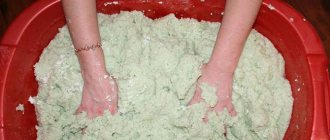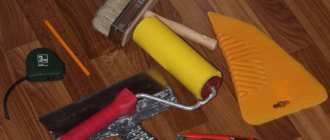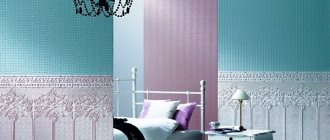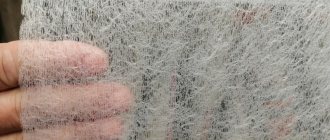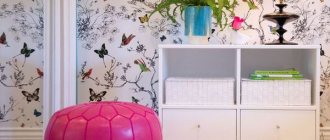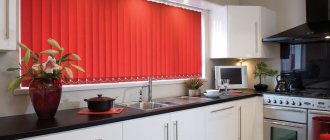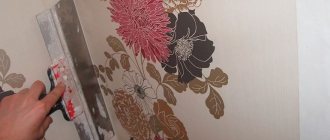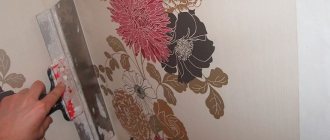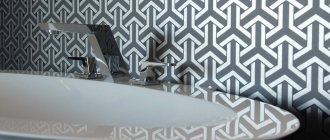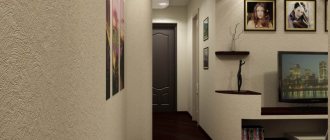October 25, 2015 Floor and wall materials
Paper wallpaper has historically been and remains a popular finishing material, regardless of what level of social status the buyer is at or how much he earns. Prices for these products differ depending on the manufacturing technology, but are always characterized by democratic prices.
Wallpaper paper material
Manufacturers offer many types of wallpaper, which differ not only in style, but in material and application. The choice should largely depend on where you plan to paste the wallpaper and how long-lasting the effect is needed.
- Some rooms, such as the bathroom or kitchen, require more durable and high-quality materials that will last for many years.
- Before you start choosing suitable wallpaper, you should decide what properties are expected from it.
- Does your wallpaper need to be waterproof? Or maybe the emphasis is on durability and resistance to mechanical damage?
The appearance of wallpaper, although extremely important for interior design, should not be the only criterion for choosing the right product. There are many types of wallpaper available on the market, differing in the material from which they are made, the number of layers and the method of application.
Varieties
In addition to the main classification, several types of paper wallpaper can be distinguished, differing from each other in their shape and features. These varieties may vary in materials. These include:
- simplex;
- duplex;
- foam wallpaper;
- laminated.
First of all, the separation is based on manufacturing methods. They have specific operating conditions and require appropriate skills in operation.
Simplex
The name “Simplex” comes from the English word “Simple” - simple. This variety is the simplest single-layer coating created by rolling cellulose and painting. This is the cheapest wallpaper of all other types, as they are distinguished by their fragility.
Cheap simplex wallpaper
In order for the simplex to serve you for the longest period of time, it should be placed only in rooms with low humidity and low daylight. Ultraviolet light quickly causes paint to fade, and moisture will cause the wallpaper to peel off.
Some simplex coatings are extremely susceptible to mechanical damage, which requires additional care.
Duplex
Duplex wallpaper uses a two-layer structure. There are various combinations, for example, only paper can be used, or a combination of paper and vinyl. This type of finish is much more durable than conventional simplex wallpaper. It is possible to create different textures for them due to an additional layer.
Paper wallpaper - an affordable option
Although paper wallpaper has a number of disadvantages, it remains in the range of the largest manufacturers.
- Paper wallpaper is the cheapest, but least durable type of wallpaper.
- However, they still find their buyers.
- Compared to non-woven or vinyl copies, they have a number of disadvantages.
Gluing and removing them from the surface is quite problematic; wallpaper is almost unsuitable for washing (unsuitable for places with high humidity) and is not suitable for walls prone to cracking.
Paper wallpapers are available in two versions: single-layer and double-layer. They are most often chosen for bedrooms and children's rooms. Among them there are many smooth and patterned models that are suitable for any arrangement.
Paper wallpaper is very cheap, but, unfortunately, it also has disadvantages. Due to the material they are made from, they may remain stained after dirt is removed.
Preparatory work
In order for new wallpaper to last as long as possible, you need to carry out the preparatory work correctly. The complexity of preparation depends on the type of surface.
If there is old wallpaper on the surface, then it needs to be removed. In uneven areas, sand the entire surface. It is necessary to level the walls as much as possible. Putty surfaces must be vacuumed and primed. By the way, priming is carried out using a special primer or wallpaper glue, diluted according to the instructions.
If there is glass wallpaper on the surface of the walls, then the base of the walls is washed with a solvent. After this, the entire surface is puttyed, as well as sanded and primed.
Textile wallpaper is removed from the surface using a special product that removes this type of wallpaper. The surface is also primed and puttied.
The surface with paint is washed with a solvent. After this, the paint is scraped off with a spatula. Of course, this is followed by puttying and sanding the surface.
The plastered surface or concrete is carefully puttied. After sanding, you need to go over the surface with a vacuum cleaner. Before this, a primer is applied.
If the wall has a sharp difference in color from the new wallpaper, then you need to prime the wall using a primer of a more suitable shade.
Paper wallpaper on the wall
Paper wallpaper is usually cheaper than non-woven or vinyl wallpaper. Lightweight paper wallpaper is also easier to hold on to the backing, where heavy wallpaper can have problems. On the other hand, they have quite a lot of disadvantages.
- They may shrink a little after painting, which must be taken into account before gluing.
- The glue must be applied to the wallpaper and wait a few minutes until the material is properly wet.
- They can be wiped occasionally with a damp cloth, but never washed; their abrasion resistance is also significantly lower than that of other materials.
This is wallpaper made from embossed, printed and pressed paper. The highest quality is two-layer paper wallpaper with embossing - the so-called duplex. Based on the weight of the raw material, paper wallpapers are divided into light, medium and heavy.
A little history
Paper wallpaper was invented many centuries ago, during the Ming Dynasty in China, when rice paper appeared. In Europe, they became widespread only in the 17th century, when a craze for the motifs of medieval Chinese art began. Artists decorated the wallpaper with complex colorful landscapes, flowers and birds, elephants and dragons. This style direction still exists today and is called Chinoiserie , which means Chinese in French.
Sheet music with Chinese themes.
The oldest paper wallpapers that have survived to this day date back to the early 16th century. By the way, the English brand Wallpaper De Gournay has a collection with the same name and canvases of stunning beauty. Wallpaper to this day does not lose its relevance; such an ancient canvas with a deep history and subtle philosophy attracts with its romance, and the latest technologies allow us to further expand aesthetic possibilities.
De Gournay
Nowadays, wallpaper, of course, is more often found in the form of simple rolled factory products, but there are also manufacturers who have preserved traditional manufacturing methods.
Modern and classic options
Do you need an affordable option, albeit of low quality? Paper wallpaper will be a suitable solution that no other type can match in price. However, the low price is achieved at the expense of low durability, since this type also has a number of disadvantages.
They are not recommended for use in damp environments, so they are suitable for living rooms, bedrooms or children's rooms.
Additional group of pictograms
Wallpaper embossed duplex
Double wallpaper, the top layer of which is embossed
Requires special glue
To hang wallpaper you need a special glue. The name of the required glue is indicated on the label
Double cut lapel
An outdated method of wallpapering is an overlap with further removal of the wallpaper seam
Impact resistant wallpaper
Particularly durable wallpaper, resistant to mechanical shocks and scratches (anti-vandal)
Also, the wallpaper can be marked with symbols indicating its environmental safety and fire safety class.
Environmental and fire safety symbols on wallpaper
In addition, wallpaper produced in EU countries may have special markings, for example, Gütegemeinschaft Tapete eV. This organization has developed special regulations for the quality and testing of wallpaper, which indicate technical requirements, as well as standards regarding harmlessness to health and the environment . The European Union has a special, independent supervisory body that monitors compliance with such regulations.
Wallpaper quality mark
Another marking that meets the requirements of EU directives is the CE mark, which is used for the entire range of construction and finishing products. The CE mark placed on the wallpaper label means that the manufacturer guarantees that the quality of this product complies with the currently valid EU directives regarding the quality of construction products.
EU legislation is very strict in matters of this kind, so the presence of such designations on the label is an additional plus in favor of a particular product.
CE mark for construction products
Important! On each roll of wallpaper, on the packaging label there is a release date and a batch number, sometimes also called a batch number. The batch number is important for the buyer, since wallpaper from different batches may have significant color differences. Therefore, we must strive to buy rolls from the same batch. If this is not possible, rolls from different batches should be distributed on opposite walls, in which case the difference in color will be least noticeable.
Beautiful and long lasting colors
In addition to the disadvantages, these models also have a number of advantages. This is not only a low price tag, but also a constant color - these are the main positive features of this wallpaper.
Thin paper wallpaper
Wallpaper with a large selection of different patterns and colors, as well as the lowest price, is paper wallpaper. Among them there are plain and single-color, patterned, so-called structural (embossed) and even phosphorescent. You can choose wallpaper for painting.
Classification by color fastness to light
Characterizes the wallpaper's resistance to fading under the influence of sunlight.
Wallpaper is not resistant to sunlight, the paint will fade quite quickly. Recommended for use on shadow sides
Over time, signs of fading may appear
Do not fade when exposed to moderate amounts of light
Very good light fastness
Do not fade with prolonged exposure to direct sunlight
Wallpaper with maximum light resistance. Such wallpapers are not subject to fading; they retain their original color throughout the entire period of use.
Is it possible to wash paper wallpaper?
For a wall that gets dirty easily (for example, in the living room), you can choose washable wallpaper. Washable wallpaper for the kitchen is a good alternative to tiles. The easiest way to keep waterproof wallpaper clean is vinyl, fiberglass or cork.
They can be washed many times. It is somewhat more difficult in this regard with textile specimens. The worst situation is with paper wallpaper. They can only be gently wiped with a damp cloth.
Wallpapering
Pasting wallpaper is, despite its apparent simplicity at first glance, not such an easy task, although it does not require an outstanding specialist to complete it.
The most important thing is accuracy, patience, but also careful planning of work, thanks to which unnecessary problems will be avoided. Also for work you will need accessories that will allow you to do everything efficiently.
How to paste paper wallpaper
First you need to prepare the surface. It should be clean, smooth and even. Of course, you will need glue to hang wallpaper.
- A utility knife, a sponge to remove excess glue, and a roller to distribute bubbles may also come in handy.
- Strips of paper wallpaper should be greased with glue and applied evenly to the wall, starting from the top.
- The most important thing is not to forget to save the pattern on the wallpaper so that when covering the wall, it merges into a single whole.
Classification according to the method of joining the pattern
This group of pictograms describes the methods of joining wallpaper when gluing, based on the location of the pattern on them.
No adjustment of the pattern is required. This is the easiest way to wallpaper
Symmetrical arrangement of the pattern. It is necessary to match the pattern at the same level on adjacent wallpaper sheets. Shifting the wallpaper is not required. Gluing such wallpaper is also not particularly difficult.
The pattern needs to be adjusted and the wallpaper trimmed. Additionally, manufacturers always indicate the amount of repeat and offset. (Repeat is the distance in centimeters through which the pattern is repeated. Offset is the amount by which the canvases need to be shifted. For example, 64/32) When gluing such wallpaper, scraps will inevitably form, so it is necessary to have a stock of wallpaper by the meter
It is necessary to rotate the wallpaper sheet 180 degrees, that is, each subsequent sheet is glued upside down relative to the previous one.
Adhesive for paper wallpaper
For gluing you will need paper wallpaper glue. This process is slightly different from placing non-woven wallpaper, because here you will need to apply glue not only to the wall, but also to the wallpaper itself.
It is worth remembering that in order to lay the wallpaper evenly, it is necessary to accurately measure the first strip. It is best to do this before mixing the glue.
When preparing wallpaper glue, follow the instructions on the package. The instructions also contain information about what type of wallpaper the glue is used for (which is extremely important), how much water needs to be prepared for mixing and how many square meters the solution will be enough for.
- If possible, it is advisable to use a special glue bucket with liquid level markings.
- The bucket should be clean and free of rust or dirt. It is better to use a larger bucket so that the glue does not overflow.
- You should always use a new, unopened container of glue.
- After opening, the glue may lose some of its qualities, which will negatively affect the durability of the wallpaper on the wall.
- The product should be stored in a dry and cool place for no more than 14 days.
In a situation where you cannot start working right away, it is recommended to tightly cover the glue bucket and stir the contents before use.
